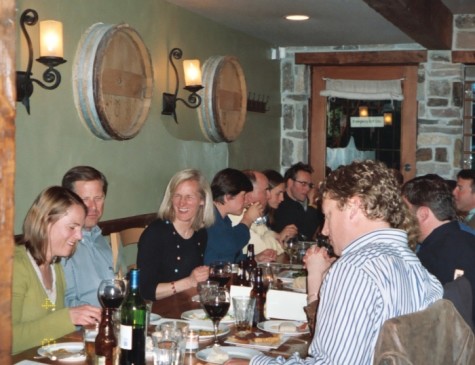Ancient Basque Salt Featured at Smithsonian Folklife Festival
July 9, 2016
Salt is a crucial element for life and the Basques have been harvesting it for thousands of years. The work of the Basque salt makers of the historic Añana Valley in Spain’s Basque Country has been on display at the Smithsonian Folklife Festival: Basque: Innovation by Culture.
Over 200 million years ago, a salty ocean covered the Añana Valley. The eventual evaporation of the water left behind enormous salt deposits which were gradually covered by many strata of rock and earth, which comes to the surface in the form of salty springs.

The ancient site in the province of Araba in Hegoalde (Spanish Basque Country) is special because inhabitants of the valley have been harvesting the Añana salt or Añanako Gatza for at least 7,000 years and their work continues today, said Alberto Plata, archeologist and cultural director at the Valle Salado de Añana Foundation. He explained the process to visitors at the Smithsonian festival, located on the National Mall from June 28 to July 10.
MORE STORIES ABOUT BASQUE FOOD
At the Smithsonian festival, visitors watched as Edorta Loma, one of the valley’s salt masters, poured water into a large pan and later scraped the salt to the center of the pan and collected it. For practical purposes, the salt water used for the exhibit was obtained locally. For more information on the Añana Valley salt production, click here
The history of this ancient Basque tradition is amazing. As the production of salt began to be industrialized globally in the mid-20th century, the valley began to be abandoned by the local families, who could not afford to compete with the price of salt obtained commercially.
The remaining families, known as the salineros, finally asked for financial support to preserve this vanishing way of life in the year 2000, said Plata. As a result, with the help of the regional government and later the foundation, the unique harvesting of the valley’s salt has been preserved. Today, this authentic Basque salt is considered so high quality that it is used by some of the top chefs of Europe, including the best chefs of the Basque Country.

The Añana Valley is one of the oldest natural salt production sites in the world. Proof that the local Basque people have been collecting the salt for centuries is evidenced by shards of pottery discovered in the area by archeologists, said Plata. In early days, the salt water was poured into ceramic pots and then a fire was lit under the pot to evaporate the water. The pot was then broken to remove the crystallized salt.
During the Roman Empire, as the demand for salt increased, an extensive pond system was created from wood, stone and sand. This system, although in constant renovation, is still in use. The salt is produced through natural evaporation of the water during the summer months. For more information about the production of Añana salt or to buy its products, click here. To buy high quality natural Himalayan salt from Amazon, click here.
Today, the Valle Salado de Añana Foundation owns the valley and runs the production of the salt, in conjunction with the local families. The foundation is constantly researching methods for improving its operation and competing for sales of salt products in the global market. The valley is accessible to the public and educational programs are offered.
Today, the salt makers create high quality Añana salt products that are sold in 25 countries. Eventually, said Plata, the foundation hopes the production of salt from Añana Valley will be completely self-sufficient. Next time you are in the Basque Country, be sure to obtain some of this world-class Basque salt and support the salt production of the Añana Valley.
This video, in Spanish, talks about the efforts to support the Añana salt production.















